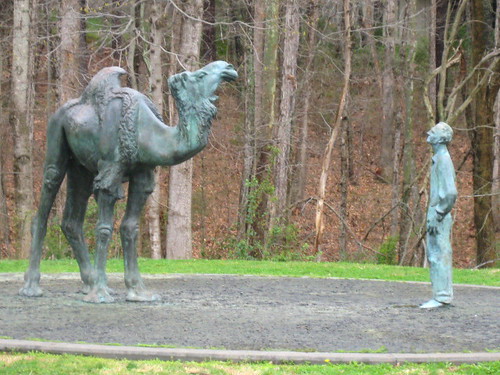In some cases, thermal energy can be converted into work. When gas in a cylinder is heated, it expands against a piston that does work. Energy can be supplied to an organism and it lives. To what extent can these processes, which apparently contradict the normal increase of entropy, be made to take place? The questions can be stated in a more basic form.
1. To what extent is it possible to convert internal energy distributed randomly over many molecules into energy that involves a change of a macroscopic parameter of the system? (How much work can be captured from the gas as it expands the piston?)
2. To what extent is it possible to convert a random mixture of simple molecules into complex and highly organized macromolecules?
Both these questions can be reformulated: under what conditions can the entropy of a system be made to decrease?
The answer is that the entropy of a system can be made to decrease if, and only if, it is in contact with one or more auxiliary systems that experience at least a compensating increase in entropy. Then the total entropy remains the same or increases. This is one form of the second law of thermodynamics. For a fascinating discussion of the second law, see Atkins (1994).
 |
| The Second Law: Energy, Chaos, and Form, by Peter Atkins. |
No other part of science has contributed as much to the liberation of the human spirit as the Second Law of thermodynamics. Yet, at the same time, few other parts of science are held to be so recondite. Mention of the Second Law raises visions of lumbering steam engines, intricate mathematics, and infinitely incomprehensible entropy. Not many would pass C. P. Snow’s test of general literacy, in which not knowing the Second Law is equivalent to not having read a work of Shakespeare.Atkins’s book is at the level of a Scientific American article, with many useful (and colorful) pictures and historical anecdotes. The writing is excellent. For instance, consider this excerpt:
In this book I hope to go some way toward revealing the workings of the Law, and showing its span of application. I start with the steam engine, and the acute observations of the early scientists, and I end with a consideration of the processes of life. By looking under the classical formulation of the Law we see its mechanism. As soon as we do so, we realize how simple it is to comprehend, and how wide is its application. Indeed, the interpretation of the Second Law in terms of the behavior of molecules is not only straightforward (and in my opinion much easier to understand that the First Law, that of the conservation of energy), but also much more powerful. We shall see that the insight it provides lets us go well beyond the domain of classical thermodynamics, to understand all the processes that underlie the richness of the world.
The Second Law recognizes that there is a fundamental dissymmetry in Nature…hot objects cool, but cool objects do not spontaneously become hot; a bouncing ball comes to rest, but a stationary ball does not spontaneously begin to bounce. Here is the feature of Nature that both Kelvin and Clausius disentangled from the conservation of energy: although the total quantity of energy must be conserved in any process…, the distribution of that energy changes in an irreversible manner…I particularly like Atkins’ analysis of the equivalence of two statements of the second law: No process is possible in which the sole result is the absorption of heat from a reservoir and its complete conversion into work (Kelvin statement); and no process is possible in which the sole result is the transfer of energy from a cooler to a hotter body (Clausius statement). Atkins writes
The Clausius statement, like the Kelvin statement, identifies a fundamental dissymmetry in Nature, but ostensibly a different dissymmetry. In the Kelvin statement the dissymmetry is that between work and heat; in the Clausius statement there is no overt mention of work. The Clausius statement implies a dissymmetry in the direction of natural change: energy may flow spontaneously down the slope of temperature, not up. The twin dissymmetries are the anvils on which we shall forge the description of all natural change.Peter Atkins has written several books, including another of my favorites: Peter Atkins’ Molecules. Here is a video of Atkins discussing his book the Four Laws that Drive the Universe. Not surprisingly, the four laws are the laws of thermodynamics.
Peter Atkins discussing the Four Laws that Drive the Universe.










